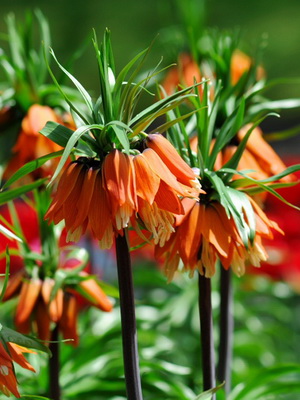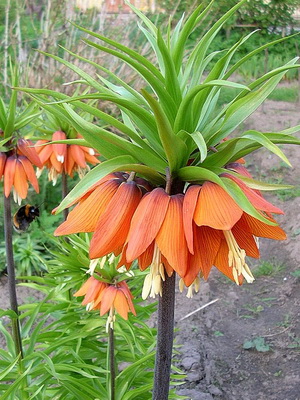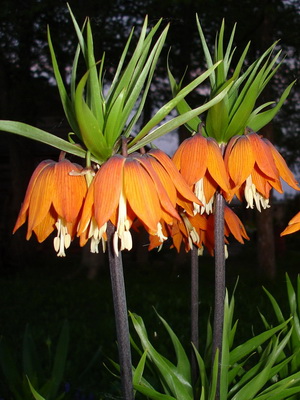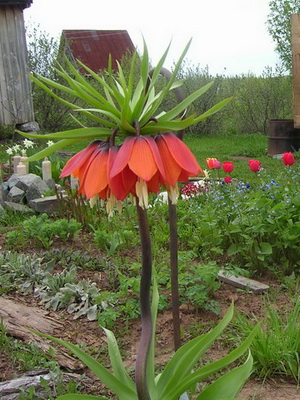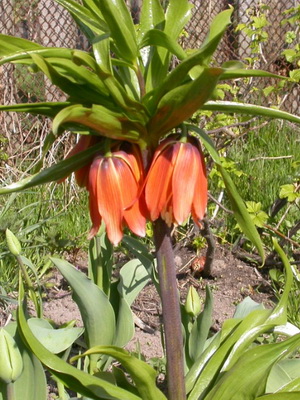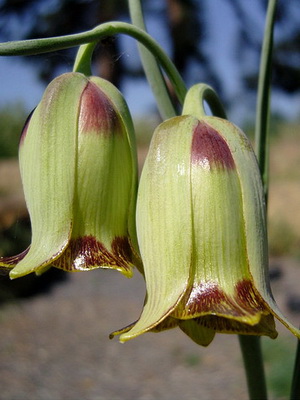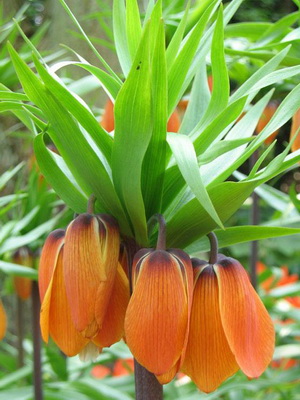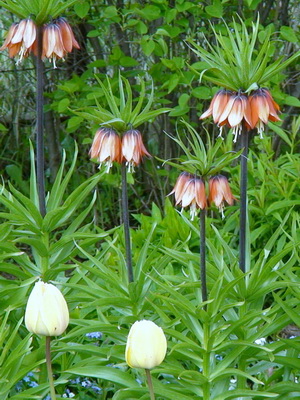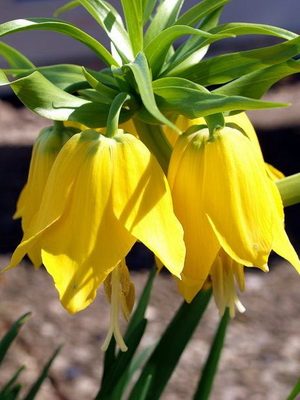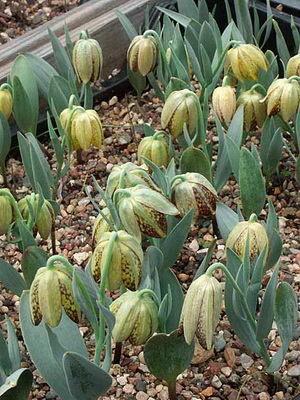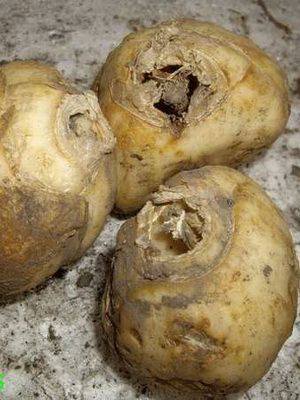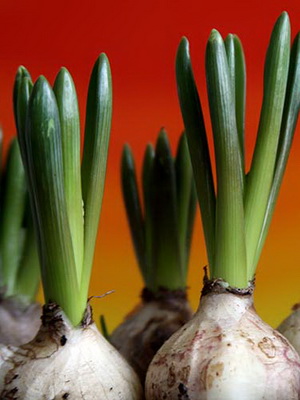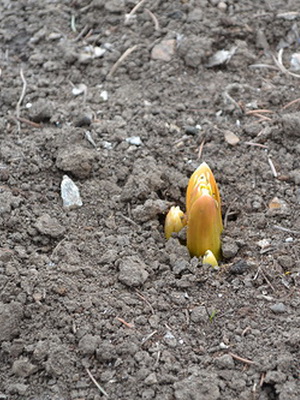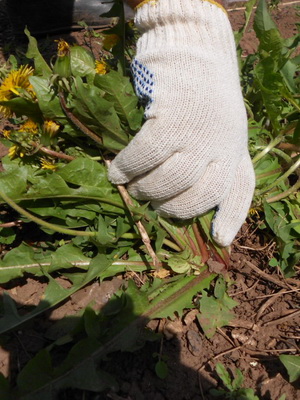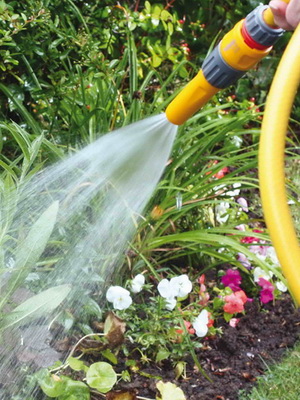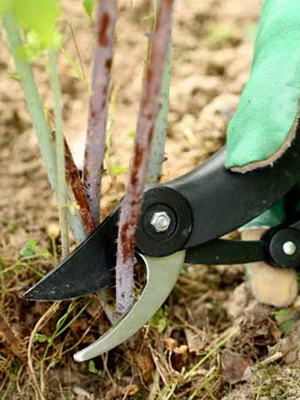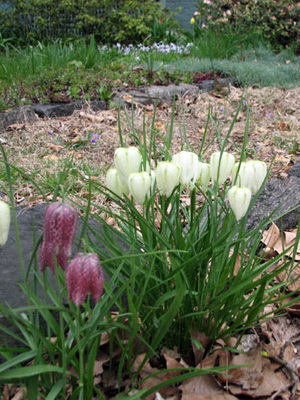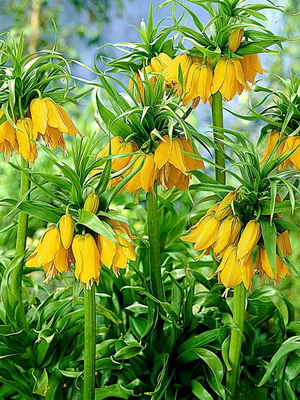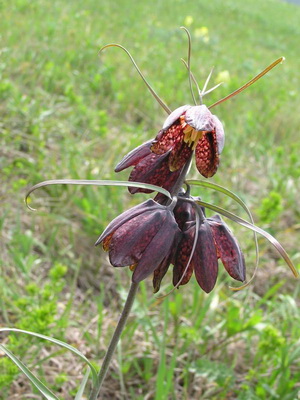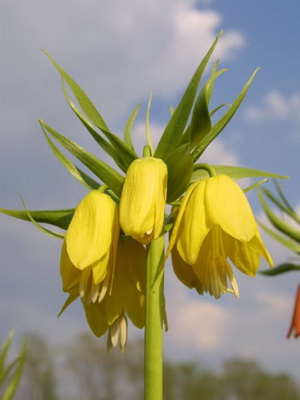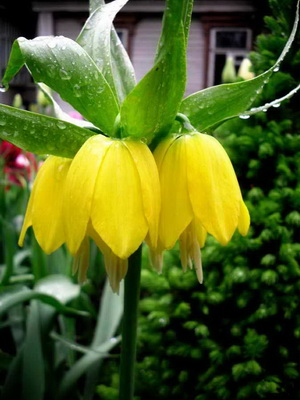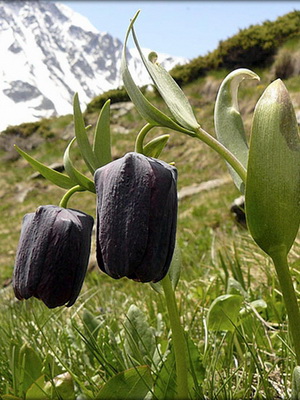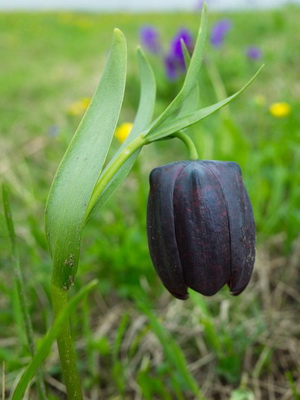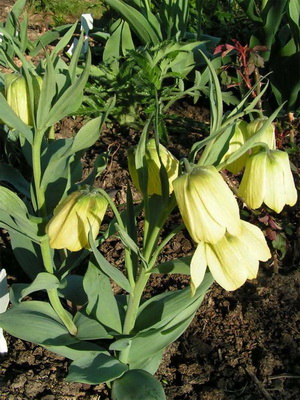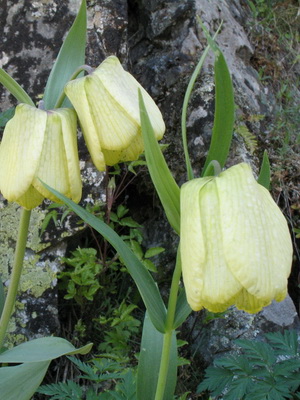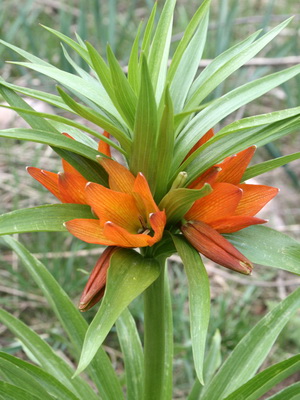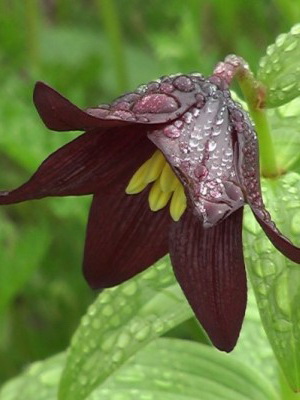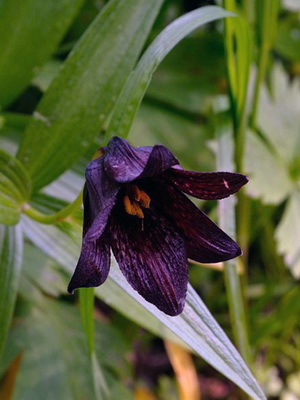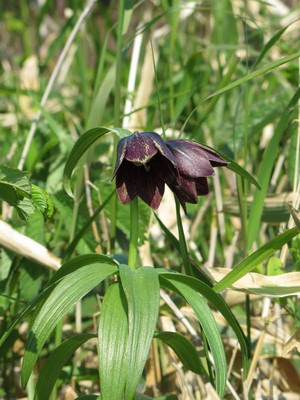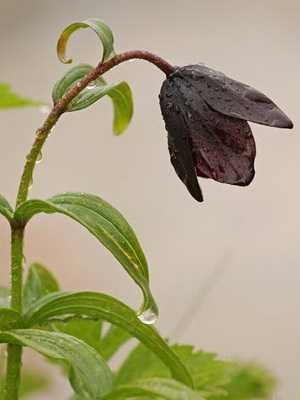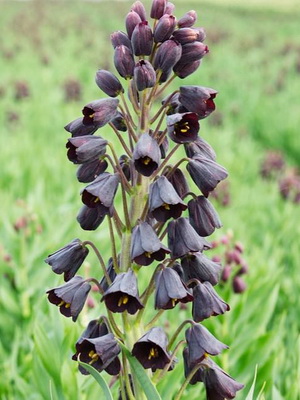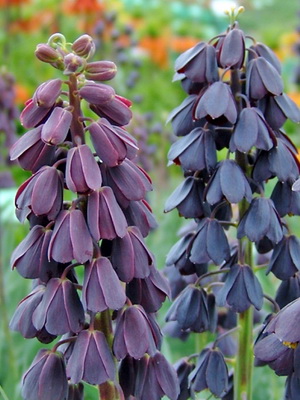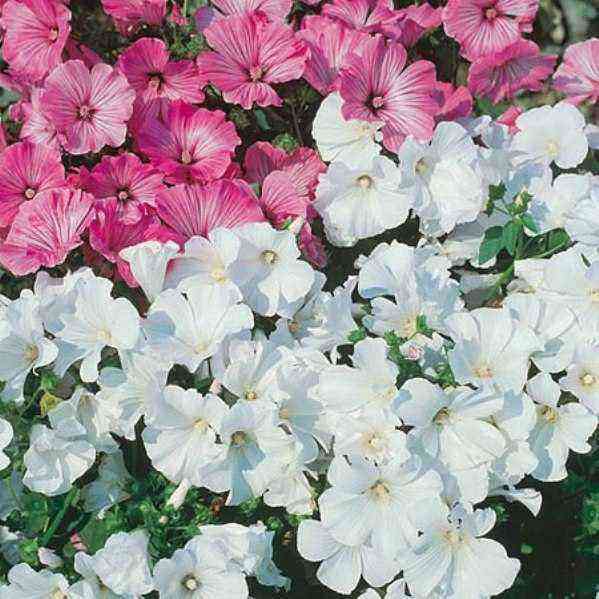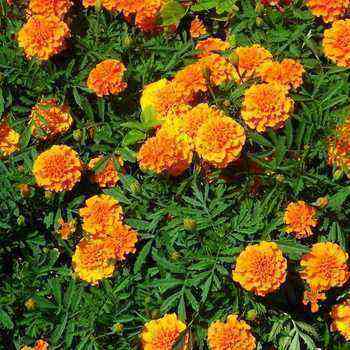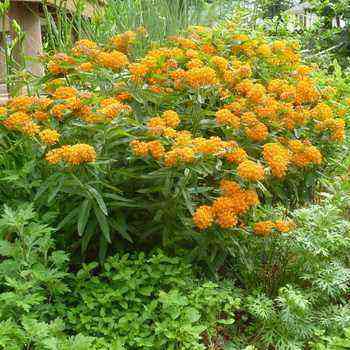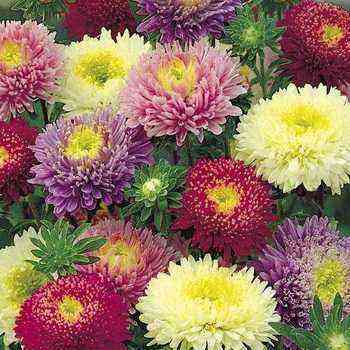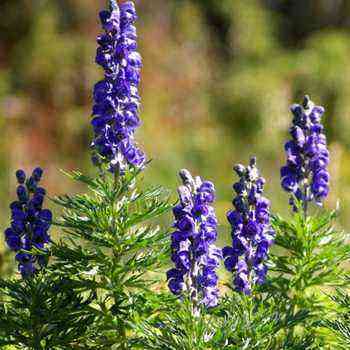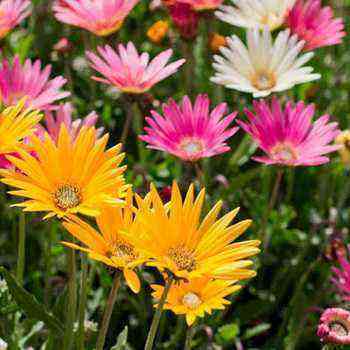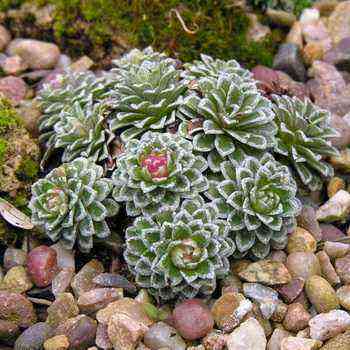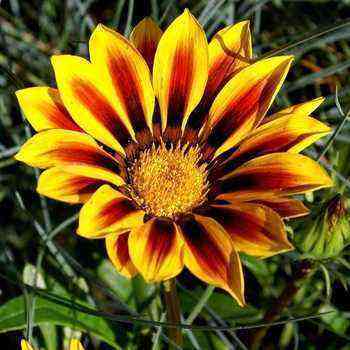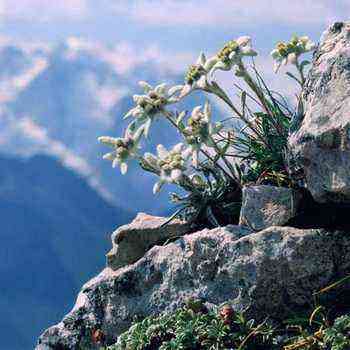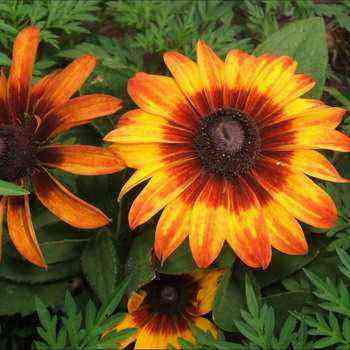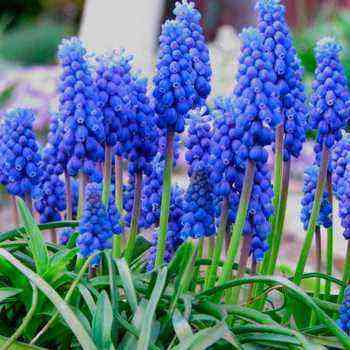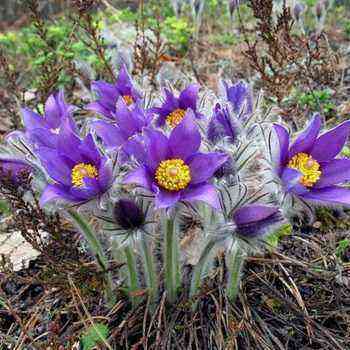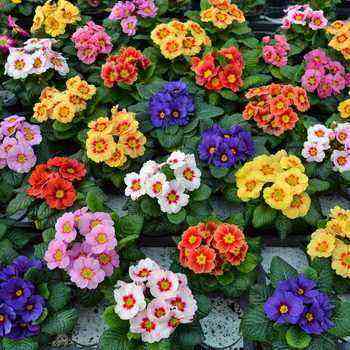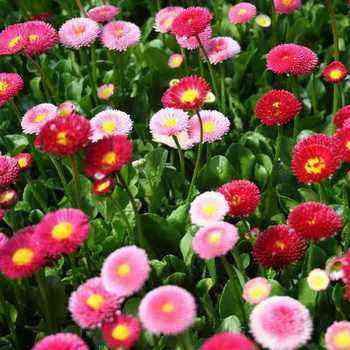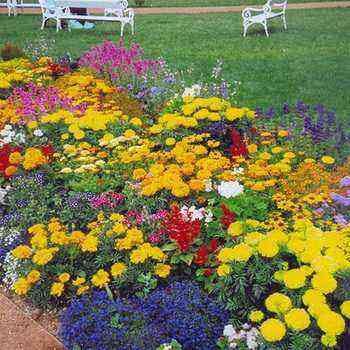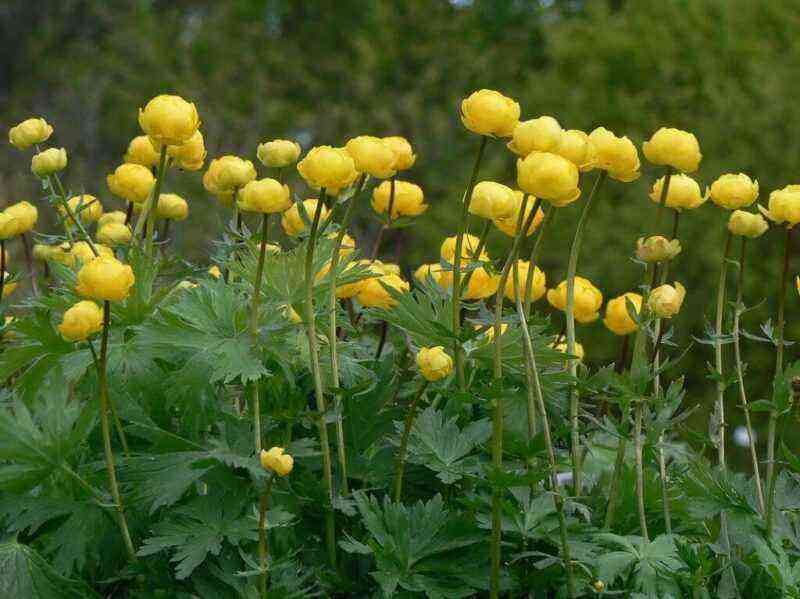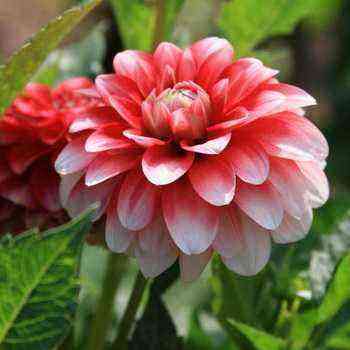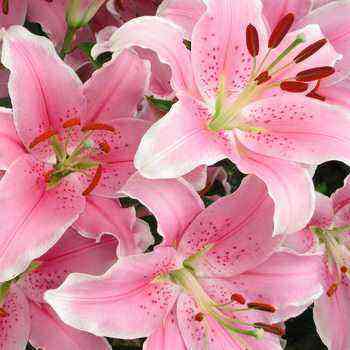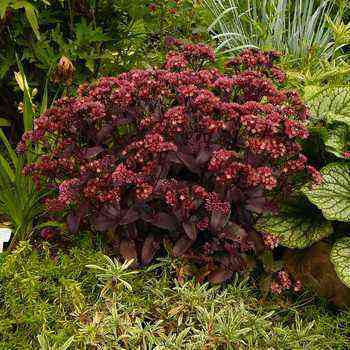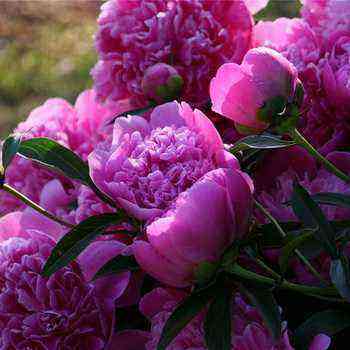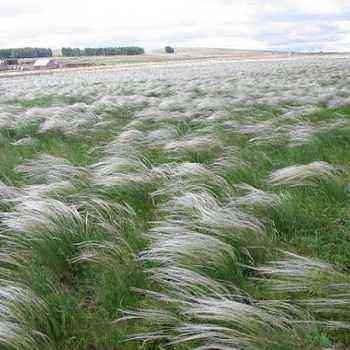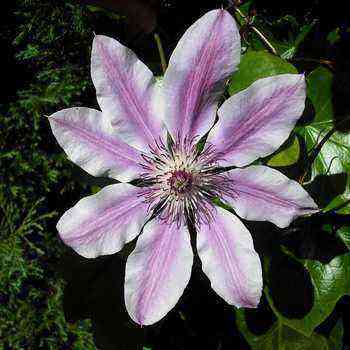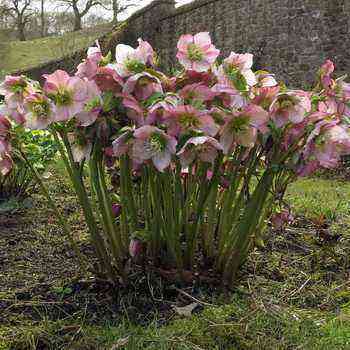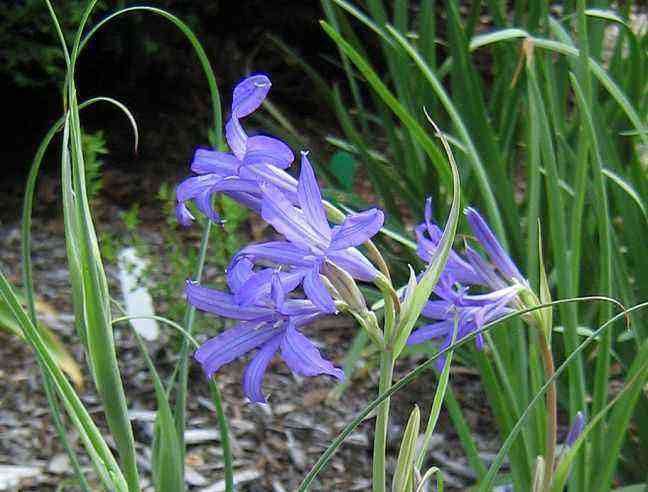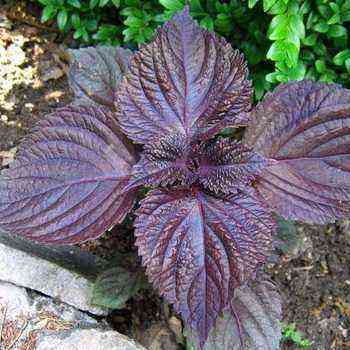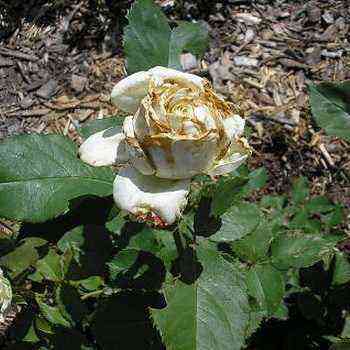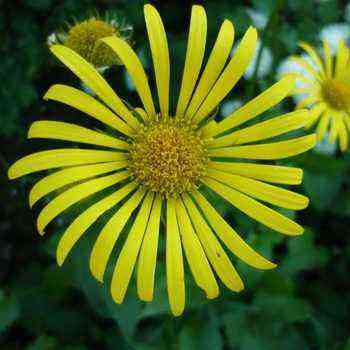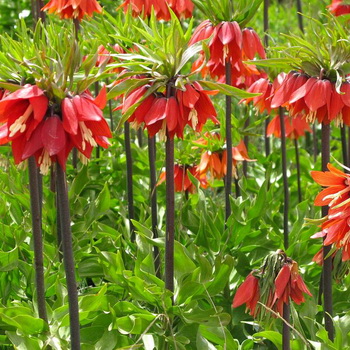
Description of the imperial hazel grouse
The botanical name for hazel grouse is fritillaria, this plant belongs to the Liliaceae family. Wild species grow in the Caucasus, Turkey, Iran, Central Asia, Europe, and the Far East. In total, there are about 100 species of these wonderful bulbous plants on the globe. They are very diverse in appearance, shape and color of flowers, flowering time.
Of the hazel grouses, most often in our gardens you can see the imperial hazel grouse. This plant, which differs sharply from other flowers, gardeners are very proud of, as it gives the garden an exotic look. And who doesn’t want to boast of a beautiful rarity! Several varieties are known: yellow-flowered – “Flava”, “Maxima Lutea”; with fiery orange flowers – “Orange Brilliant”, “Aurora”; with red – “Maxima Rubra”. The Prolifera variety is characterized by a double row of petals.
As you can see in the photo, the imperial hazel grouse plant is striking not only in shape, but also in size:
The height of the peduncle is up to 1 m or more, and the bulbs of some varieties, for example, Rubra Maxima, can have a diameter of up to 15 cm and a weight of about 1 kg.
In mid-April, strong, dark-colored shoots appear from the ground, which grow very quickly and reach a height of 100-120 cm. Shoots are resistant to spring frosts. The leaves of the plant are dark green, rather large in the lower part of the stem, and shrink closer to the top. The shoot ends with a bunch of small narrow leaves, under which large, up to 5 cm long, drooping bell-shaped flowers appear in May. Usually there are from 4 to 6. Flowers are orange-red, with brown veins on the outside of the petals, with a characteristic odor.
Look at the photo – the hazel grouse flowers on the inside of each of the 6 petals have a white speck at the base with a dark rim:
It is a nectary that profusely secretes a sweet liquid that attracts pollinating insects. The imperial hazel grouse blooms in mid-May, flowering lasts about two weeks. It lasts longer if the plant is in partial shade. At the end of flowering, the stem and leaves begin to turn yellow. In case of successful pollination, fruits are formed – large angular bolls filled with seeds. The bulbs are large, do not have a protective dry film; they ripen after lodging of the stems. The bulbs give off a pungent odor that small rodents cannot tolerate. The hazel grouses are not susceptible to diseases and are slightly damaged by pests.
How to plant and grow hazel grouse correctly
Growing and caring for hazel grouse is not difficult. Plants thrive both in sunny and slightly shaded areas. However, open flat areas are preferable, where they start growing earlier and their bulbs ripen better. The soil should be loose and textured.
Before growing hazel grouses, it is necessary to add sand to the loam – 1-2 buckets per 1 m2. Grouse grow in one place for up to 5 years or more, therefore, before planting, the soil must be well prepared and a sufficient amount of organic fertilizers must be added to it. Before planting the flowers of hazel grouse, a bucket of compost or leafy soil is introduced per 1 m2, the same amount of rotted peat and half a bucket of rotted manure are dug to the depth of a shovel bayonet. This amount of fertilizers is quite enough for 5 years, so no additional application of mineral and organic fertilizers is required.
Then you can see the photos and read about the care and planting of hazel grouses in the personal plot:
Reproduction of hazel grouses is carried out by baby bulbs and seeds. The bulbs are dug up after the stems have lodged and stored in wet sand before planting to prevent drying out. If the roots begin to “peck”, the bulbs must be planted immediately, since the roots reach a length of 8-10 cm in a week and are inevitably damaged during planting. In the southern regions, hazel grouses can grow in one place for more than 5 years without digging, and in areas with a cool climate, it is better to dig up the bulbs of the imperial hazel grouse annually in order to keep them until autumn at a temperature of 25-30 ° C, which will ensure good flowering next year …
How to plant hazel grouse bulbs so that they give good germination? The bulbs are planted in September to a depth of 20 cm, at a distance of 30 cm between neighboring plants. For small bulbs, these parameters are reduced by a factor of 2-3. It is better to place hazel grouses in groups of 5-6. When planting, it is recommended to lay the bulb on its side so that moisture does not get into the hole left over from the stem, which can lead to decay.
And how to properly plant hazel grouse seeds and plant them for growing? Seeds are sown immediately after harvest on prepared beds or in boxes. Baby and bulbs grown from seeds, but not reaching their normal size, are planted for growing to a depth of 5-6 cm. Seedlings bloom only in the fifth or sixth year.
As you can see in the photo, caring for hazel grouse flowers is no different from caring for other plants:
It is necessary to remove weeds, loosen the soil. After planting, when caring for hazel grouses, plants are watered only in dry weather (preferably in the morning or in the evening). When cutting flowers, it is imperative to leave some of the leaves on the stem, otherwise the growth of the bulb stops. It is recommended to cover the plants for the winter.
Grouses are used in single plantings and in groups. They are also good when cut, the flowers retain their freshness for 7-10 days.
Types and varieties of hazel grouses (with photo)
In addition to the imperial hazel grouse, a native of the Himalayan mountains, many other species of natural flora have taken root in our gardens. Moreover, in culture, these plants have become more powerful, the flowers have increased in size and acquired a richer color. Bulbs must not be taken directly from natural conditions. On the contrary, one should be very careful with hazel grouses in places of their growth. Planting material can be purchased at botanical gardens and specialized stores. Such species as Caucasian hazel grouse, Dagana, Russian hazel grouse, Ussuri hazel grouse are included in the Red Book of the Russian Federation.
Here you can see a photo and read a description of various species of hazel grouse.
Grouse Russian. Homeland – the Caucasus, the European part of Russia, Western Siberia, Central Asia. The flowers are brown-red, with a darker checkerboard pattern, inside with a yellowish tinge, bell-shaped, drooping, up to 4 cm long. Collected in a rare brush of 3-5 pieces. Forms 1 to 3 leaves. They are narrow-linear, with spirally twisted tops, with which the plant clings to its neighbors, due to which the thin stems, 30-50 cm high, do not bend. The bulb is small, up to 1 cm in diameter. Gives little babies, it is better to propagate by seeds. Blooms in May.
The hazel grouse grows naturally in the European part of Russia. The flowers are dark brown, with a pronounced checkerboard dark purple pattern, bell-shaped, up to 4 cm long, single or two on a thin stem, up to 40 cm high. The flowers of this species of hazel grouse do not have the same odor as the bulb. Leaves are linear-lanceolate, located in the upper part of the stem. The bulb is small (1-2 cm in diameter), covered with a thin brown film. Blooms in the first half of May. There are hybrid forms and varieties of white, pink and other colors, with a bright beautiful checkerboard pattern. They are very decorative, they create bright spots in the garden. Children give little. The seeds set well and give amicable shoots. Seedlings bloom in the third or fourth year.
Hazelnut yellow is endemic to the Caucasus. Flowers are single, rarely there are two, drooping, rather large, yellow. On the petals there are longitudinal green veins and a red-brown checkerboard pattern. The plant is miniature, stems up to 20 cm (rarely 30 cm) with narrow light green leaves. The bulb is small, up to 2 cm in diameter. Propagated mainly by seeds. Blooms in the first half of May.
Grouse broadleaf is also endemic to the Caucasus. The peduncle of this variety of hazel grouse, up to 30-40 cm high, bears one or two flowers 4 cm long. They are dark purple-purple, with a greenish bloom on the outside, and a yellowish checkerboard pattern on the inside of the petals. Lanceolate leaves are located at the top of the peduncle. The bulb is up to 2-3 cm in diameter, gives a lot of babies. Blooms in May.
Grouse is a native of Central Asia. Bell-shaped flowers up to 5-6 cm long, drooping, light yellow, with a greenish tinge, yellow veins, on the inside – a light brown checkerboard pattern. Collected 3-5 in a rare brush. Stems up to 80 cm tall. Leaves broadly lanceolate, pale green with a bluish tinge. The bulb reaches 3 cm in diameter. Blooms in late May – early June.
Edward’s hazel grouse is endemic to Central Asia. One of the most beautifully flowering species. The flowers are orange or brick-red, bell-shaped, up to 7 cm long and up to 5 cm in diameter, drooping, collected 5-8 in an umbrella-shaped inflorescence, above which a whorl of small leaves rises. Stems are strong, thick, up to 1.5 cm in diameter, 80 cm high. Leaves are broadly lanceolate. The bulb is very large (up to 10 cm in diameter), of 3-4 scales accreted at the bottom. Blooms in mid-May.
Grouse Kamchatka. Homeland – the Far East. It is sometimes called the Kamchatka lily. It is an amazingly beautiful plant with almost black flowers. Inside, the petals are brighter, brighter, with a faint light checkerboard pattern.
Pay attention to the photo – in this species of hazel grouse, funnel-shaped flowers, up to 5 cm long, consist of 6 fleshy petals:
Inflorescence is a rare cluster of 3-7 flowers. Blooms in late May – early June. The stems are quite strong, up to 60 cm tall. The leaves are collected in whorls of 5-10 pieces, glaucous below, turn yellow soon after flowering. The bulb up to 5 cm in diameter consists of scales, weakly attached to the bottom. There are underground stolons on which many children are formed. Propagated by children, scales, seeds. Seeds are sown in late autumn in open ground or boxes. Seedlings appear in the spring of next year. Grouse Kamchatka is a champion in frost resistance.
Persian fowl is originally from Iran. One and a half meter thick stems from the middle to the very crown are hung with dozens of purple-violet drooping bell-shaped flowers. The plant is thermophilic. Difficult to grow in areas with cold winters.
